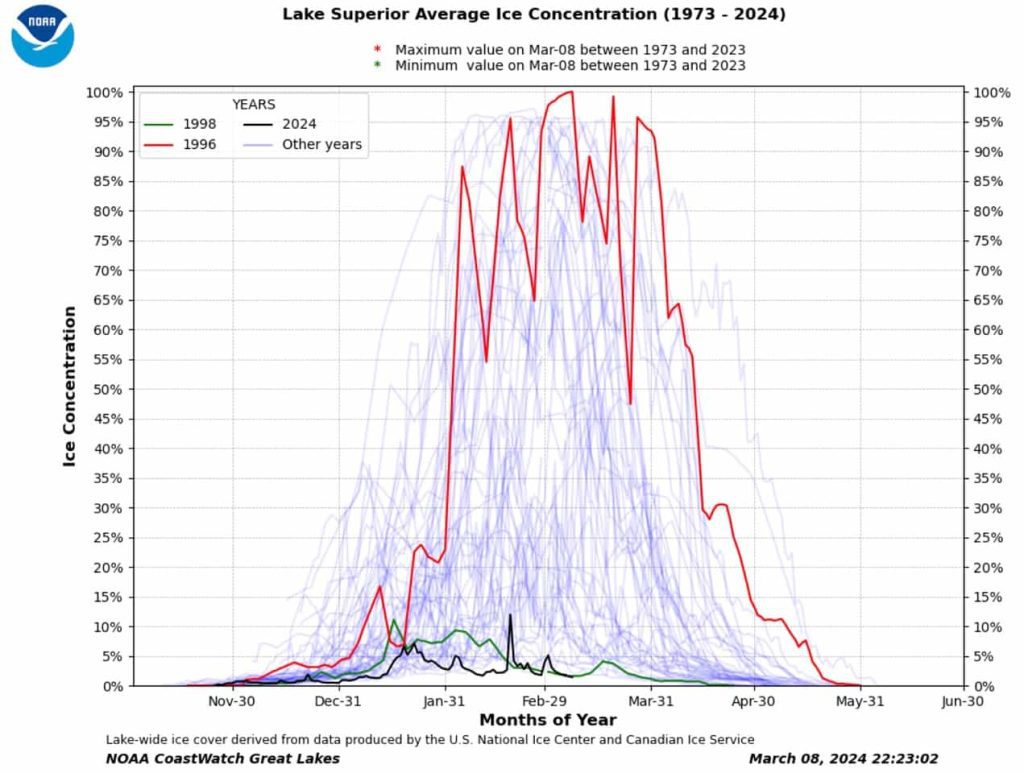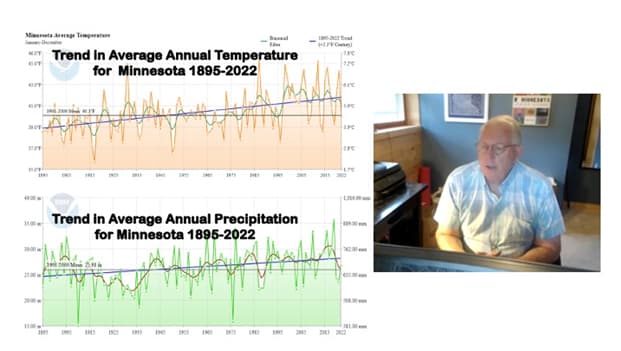
More insights on the impacts of this season’s limited ice on Lake Superior can be found in Jana Hollingsworth’s article from February 20, 2024, in the StarTribune. About 2% of the lake had ice compared to about 20% last year and 80% in 2022. Forty percent is the average ice concentration over the last 50 years.
Researchers are suggesting potential impacts to AIS, fish species, algae blooms, and more. All of the Great Lakes had limited ice this season and the effects will be studied for years.
Here’s the link to the article. You may have to have a StarTribune subscription to view the article.


